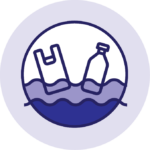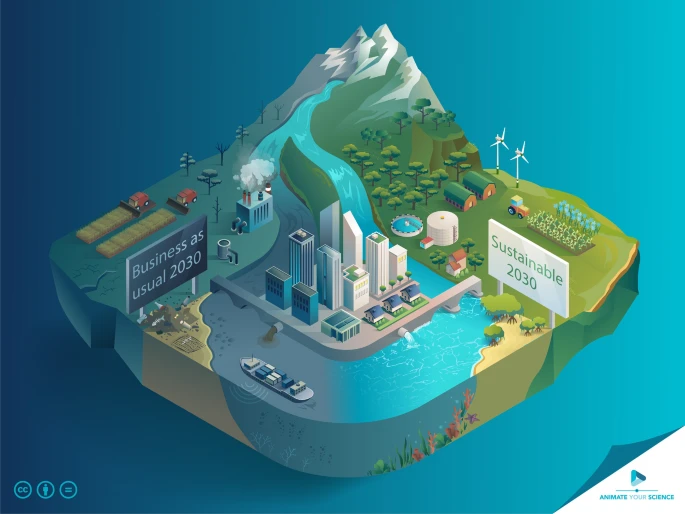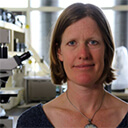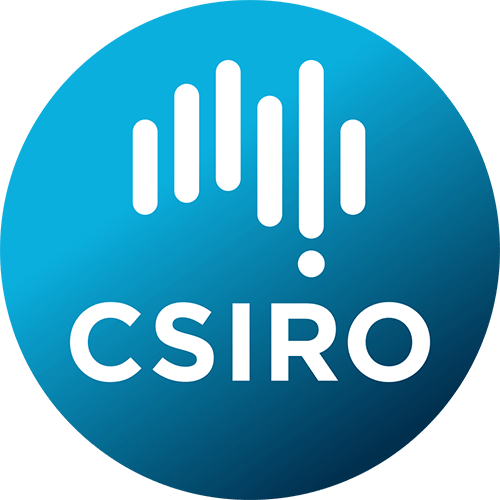Contact Us
#futureseas2030

5. Cleaner Seas
Reducing marine polution
Summary
In the age of the Anthropocene, the ocean has typically been viewed as a sink for pollution. Pollution is varied, ranging from human-made plastics and pharmaceutical compounds, to human-altered abiotic factors, such as sediment and nutrient runoff. As global population, wealth and resource consumption continue to grow, so too does the amount of
potential pollution produced. This presents us with a grand challenge which requires interdisciplinary knowledge to solve. There is sufficient data on the human health, social, economic, and environmental risks of marine pollution, resulting in increased awareness and motivation to address this global challenge, however a significant lag exists when implementing strategies to address this issue. This review draws upon the expertise of 17 experts from the fields of social sciences, marine science, visual arts, and Traditional and First Nations Knowledge Holders to present two futures; the Business-As-Usual, based on current trends and observations of growing marine pollution, and a More Sustainable Future, which imagines what our ocean could look like if we implemented current knowledge and technologies. We identify priority actions that governments, industry and consumers can implement at pollution sources, vectors and sinks, over the next decade to reduce marine pollution and steer us towards the More Sustainable Future.
Publications
Cleaner seas: reducing marine pollution
Infographic

Lead Investigators

Kathryn Willis
University of Tasmania, School of Social Sciences / CSIRO / CMS

Peter Puskic
Institute for Marine and Antarctic Studies / CMS
Anchor

Dr Denise Hardesty
CSIRO Oceans and Atmosphere
Co-Authors
Meet our fellow team members who contribute to the success of this project.

Barbara Nowak
Institute for Marine and Antarctic Studies / CMS

Catarina Serra Gonçalves
Institute for Marine and Antarctic Studies / CMS

Catriona MacLeod
Institute for Marine and Antarctic Studies / CMS

Chris Wilcox
CSIRO Oceans and Atmosphere

Jayson Semmens
Institute for Marine and Antarctic Studies, University of Tasmania

Joanna Vince
School of Social Sciences, University of Tasmania / CMS

Kelli Anderson
Institute for Marine and Antarctic Studies, University of Tasmania

Kelsey Richardson
University of Tasmania, School of Social Sciences / CSIRO / CMS

Qamar Schuyler
CSIRO Oceans and Atmosphere

Nuunoq (Per Ole Frederiksen)
The Pisuna Project, Attu, Greenland

Halfdan Pedersen
Pikkoritta Consult, Aasiaat, Greenland

Jonny Stark
Australian Antarctic Division

Jennifer Lavers
Institute for Marine and Antarctic Studies / CMS

Dean Greeno
Riawunna Centre for Aboriginal Education / CMS, Australia

future seas
FUTURE SEAS is a unique collaboration , spear-headed by the Centre for Marine Socioecology, of over 100 researchers from the University of Tasmania (UTAS), the Commonwealth Scientific and Industrial Research Organisation (CSIRO) and other institutions
Contact UsOther Links
Project flyerPartners
Copyright 2025 Future Seas.







